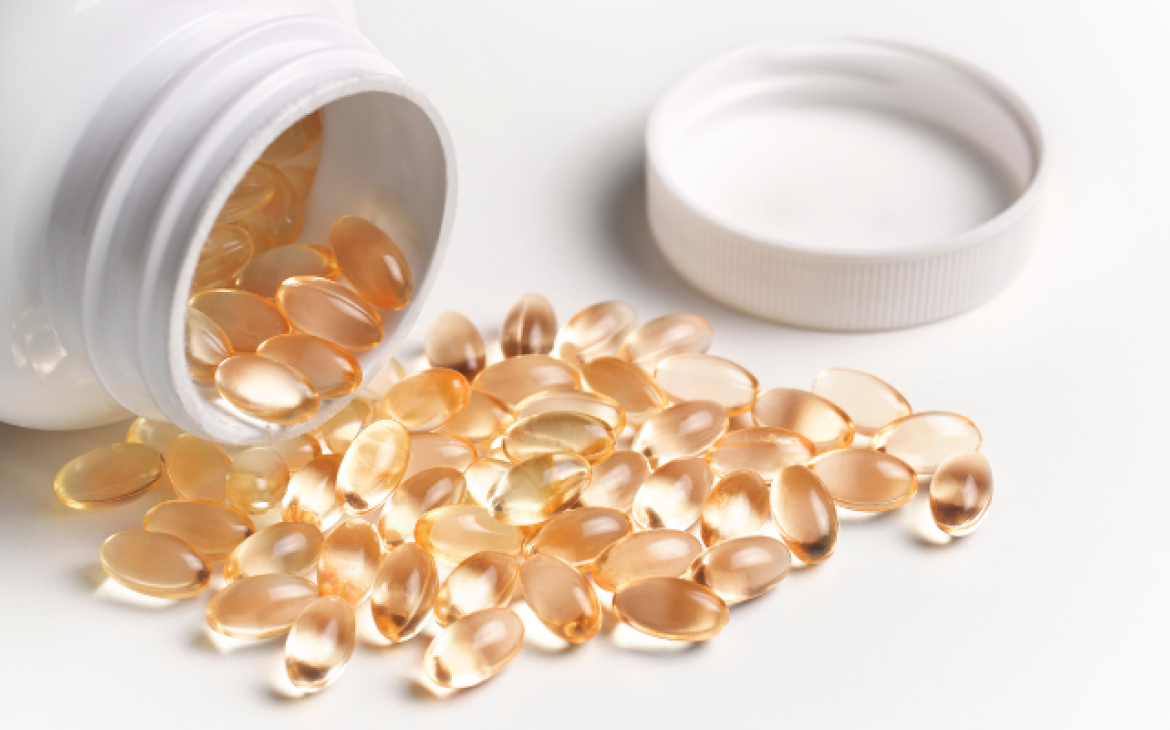
In the early days of USP, most medicines were plant or mineral based. During its first 100 years, from 1820 through 1920, USP published around 875 botanical monographs and a few monographs for minerals.
But with the development of synthetic medicines in the 1920’s, botanicals were no longer the treatment of choice for the medical community and the monographs for botanicals began to be omitted from the USP in the 1930’s to make room for synthetic organic medicinal compound monographs.
Vitamins as Medicine
The evolution of quality standards for vitamins took a slightly different path. At the turn of the century, there were many diseases caused by deficient diets – rickets from diets deficient in vitamin D, beriberi from diets deficient in vitamin B, etc. Cod Liver Oil, a substance rich in Vitamins A & D, was a popular ingredient for many products – both legitimate and questionable. At the turn of the century, there was an abundance of nostrums, patented mixtures for self-medication that made therapeutic claims, but actually contained unknown or harmful ingredients. To ensure quality, in the early 1920’s, the Bureau of Chemistry (a pre-cursor of the Food and Drug Administration) asked USP to supply medicine manufacturers with specimens of drugs assayed biologically according to USP guidelines. USP established a Vitamin Advisory Board in 1932 and the very first USP reference standards distributed were Vitamins A & D in Cod Liver Oil.
Vitamins as Nutrition
During World War II, the government rationed food on the home front to ensure adequate supplies for soldiers. As a matter of both public health and national defense, the government asked the Institute of Medicines (IOM) to determine the minimum requirements of essential nutrients necessary to maintain adequate health. The IOM created the Food and Nutrition Board, and in the early 1940’s, the Board published their findings - the Recommended Dietary Allowances (RDAs).
The RDA’s focused attention on vitamins and minerals as the building blocks of foods and added emphasis to their role in maintaining good health. As word about the health benefits of vitamins spread, people began to focus on the idea of supplementing their diet with vitamin pills as a way to prevent disease. And the popularity of these products began to surge.
The Rise of the Dietary Supplement Industry
By the 1980’s, the USP still contained monographs on some vitamins occurring in nature as well as monographs for synthetically derived vitamins, but only about 50 monographs for botanicals. Meanwhile, supplement manufacturers had developed multi-vitamins and were introducing a multitude of vitamins, minerals, botanicals and combinations of all of the above into the marketplace. By the end of the decade, there were around 2,500 vitamin products marketed in the U.S.
Unfortunately, there were no quality standards for many of these products, especially multi-vitamins. And without public standards, there was no way to know if the claims made in product labels were accurate. In other words, there was no way to determine if what was contained in the bottles matched what was claimed on the labels. Without quality tests, it was also impossible to know if the products performed as intended (disintegrated in the body) or if they were free from harmful contaminants such as heavy metals or pathogenic microorganisms.
USP Returns to its Roots
So, USP returned to its roots – both literally and figuratively. It revisited the omitted monographs for botanical products like ginger, garlic and valerian and began to develop new quality standards for a growing list of vitamin, mineral and combination products. Unlike the monographs of the 1800’s and early 1900’s that primarily provided instructions on how to consistently create compounded botanical preparations, the new monographs utilized modern analytical tools and provided methods and specifications for identity, strength and safe limits for contaminants. USP developed standards for six categories of vitamin/mineral combination products.
The new quality and performance tests were important. Like any tablet or capsule, in order for the material inside to be absorbed by the body, it must first disintegrate and dissolve. For example, the University of Maryland brought a case to USP’s attention. A patient had gone to her doctor complaining of abdominal pain. Finding no clear explanation, her doctor ordered an x-ray. The x-ray revealed 25 undissolved vitamin and calcium tablets in the patient’s stomach.
Supplements as Drug vs Food
Still, the new quality standards troubled supplement manufacturers. Manufacturers knew that anything published in the USP would be considered a drug and therefore be subject to more stringent FDA regulations. Since their products were intended to supplement deficient diet, manufacturers believed vitamins and botanicals should be considered a form of food. So, in 1989, industry groups petitioned USP to demand that USP not publish monographs for vitamins and supplements in the official pharmacopeia.
Meanwhile, concerns about the quality of supplements and the battle over how supplements would be defined (drug, food or something else entirely) continued. In 1992, Costco became the first retailer to tell private label manufacturers that in order to sell dietary supplements in their stores, the products must conform to USP standards.
The FDA also began to investigate supplement manufacturers, in particular those that made claims that their products could treat a disease or have other health effects.
The FDA investigations alarmed supplement manufacturers, who feared the FDA would ban dietary supplements entirely. So, industry groups lobbied Congress to seek clarity on how dietary supplements would be defined and regulated. They found support from Senators Orrin Hatch, Tom Harkin and Rep. Bill Richardson who introduced several bills designed to define “dietary supplements” as a subset of foods. Early versions of the bills failed in 1991 & 1992.
USP Publishes New Quality Standards for Vitamins
In 1993, USP standards for 6 classes of solid dosage form (tablets and capsules) vitamin and mineral combination products were made official and published in the USP. Three were included in the Eighth Supplement to the United States Pharmacopeia XXII and the National Formulary XVII (USP-NF) and three classes were published in a Ninth Supplement. USP also established manufacturing practices for nutritional supplements.
DSHEA Defines Supplements as a Food
Meanwhile, legislative efforts continued. A compromise bill was worked out with Senators Henry Waxman, Ted Kennedy and Rep. John Dingell, and in October 1994 the “Dietary Supplement Health and Education Act” (DSHEA) was passed.
DSHEA provided a definition of “dietary supplements” and clarified that they would be regulated as a subset of food. And although that meant supplements were regulated differently from drugs, Congress did give the FDA authority to prescribe Good Manufacturing Practices.
DSHEA Makes Compliance with USP Voluntary
Congress also included a reference to the specifications of an official compendium like USP in DSHEA. As a result of DSHEA, a dietary supplement represented as conforming to USP specifications will be deemed to be misbranded if it fails to so conform. Unlike drugs, where compliance with USP standards is mandatory by law, Congress made adherence to USP specifications voluntary for dietary supplement manufacturers.
In the years since DSHEA was adopted, the dietary supplement industry has experienced explosive growth – both in the United States and abroad.
As a matter of public health, USP continues to develop and provide quality standards and monographs for dietary supplements. In part 2 of our 3-part series on USP and Dietary Supplements, Dr. Gabriel Giancaspro, Vice President of Foods, Dietary Supplements and Herbal Medicines will discuss how the dietary supplement industry continues to evolve since the passage of DSHEA in 1994.
For more information about how foods are regulated in the U.S. see “Who’s Behind Food Safety”.
V. Srini Srinivasan, Ph.D. is executive vice president, special assignments and chief science officer at USP


